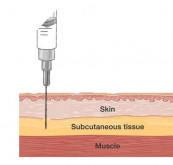 Insulin should be injected into the fatty layer under your skin. If you inject it deeper into your muscle, your body will absorb it too quickly, it might not last as long and the injection is usually more painful. This can lead to low blood glucose levels.
Insulin should be injected into the fatty layer under your skin. If you inject it deeper into your muscle, your body will absorb it too quickly, it might not last as long and the injection is usually more painful. This can lead to low blood glucose levels.
Commonly used sites are the tummy area, thighs and buttocks – the tummy area is the preferred one. When injecting in your tummy area, it should be about 1 cm away from your belly button.











